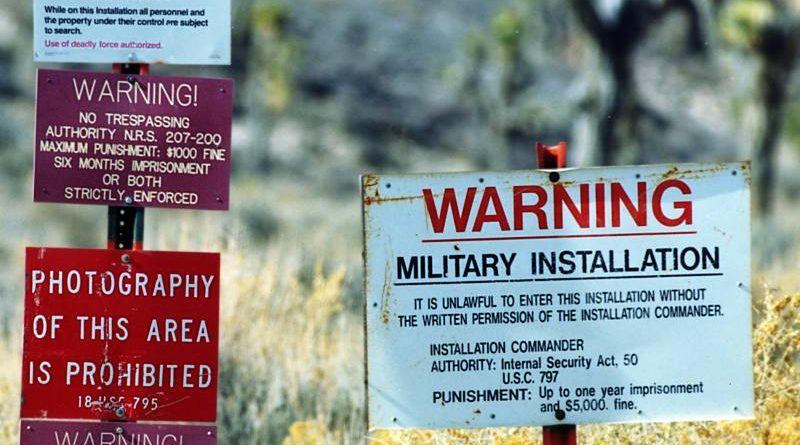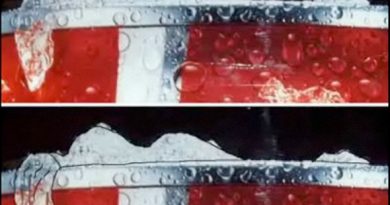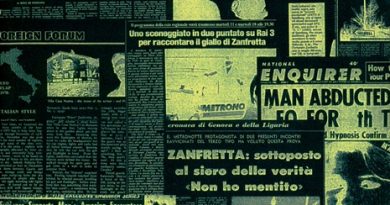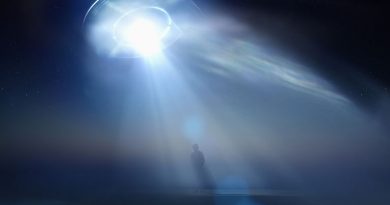The Road to Area 51
After decades of denying the facility’s existence, five former Area 51 insiders speak out
Area 51. It’s the most famous military institution in the world that doesn’t officially exist. If it did, it would be found about 100 miles outside Las Vegas in Nevada’s high desert, tucked between an Air Force base and an abandoned nuclear testing ground. Then again, maybe not the U.S. government refuses to say. You can’t drive anywhere close to it, and until recently, the airspace overhead was restrictedall the way to outer space. Any mention of Area 51 gets redacted from official documents, even those that have been declassified for decades.
It has become the holy grail for conspiracy theorists, with UFOlogists positing that the Pentagon reverse engineers flying saucers and keeps extraterrestrial beings stored in freezers. Urban legend has it that Area 51 is connected by underground tunnels and trains to other secret facilities around the country. In 2001, Katie Couric told Today Show audiences that 7 percent of Americans doubt the moon landing happenedthat it was staged in the Nevada desert. Millions of X-Files fans believe the truth may be “out there,” but more likely it’s concealed inside Area 51’s Strangelove-esque hangarsbuildings that, though confirmed by Google Earth, the government refuses to acknowledge.
The problem is the myths of Area 51 are hard to dispute if no one can speak on the record about what actually happened there. Well, now, for the first time, someone is ready to talkin fact, five men are, and their stories rival the most outrageous of rumors. Colonel Hugh “Slip” Slater, 87, was commander of the Area 51 base in the 1960s. Edward Lovick, 90, featured in “What Plane?” in LA’s March issue, spent three decades radar testing some of the world’s most famous aircraft (including the U-2, the A-12 OXCART and the F-117). Kenneth Collins, 80, a CIA experimental test pilot, was given the silver star. Thornton “T.D.” Barnes, 72, was an Area 51 special-projects engineer. And Harry Martin, 77, was one of the men in charge of the base’s half-million-gallon monthly supply of spy-plane fuels. Here are a few of their best storiesfor the record:
On May 24, 1963, Collins flew out of Area 51’s restricted airspace in a top-secret spy plane code-named OXCART, built by Lockheed Aircraft Corporation. He was flying over Utah when the aircraft pitched, flipped and headed toward a crash. He ejected into a field of weeds.
Almost 46 years later, in late fall of 2008, sitting in a coffee shop in the San Fernando Valley, Collins remembers that day with the kind of clarity the threat of a national security breach evokes: “Three guys came driving toward me in a pickup. I saw they had the aircraft canopy in the back. They offered to take me to my plane.” Until that moment, no civilian without a top-secret security clearance had ever laid eyes on the airplane Collins was flying. “I told them not to go near the aircraft. I said it had a nuclear weapon on-board.” The story fit right into the Cold War backdrop of the day, as many atomic tests took place in Nevada. Spooked, the men drove Collins to the local highway patrol. The CIA disguised the accident as involving a generic Air Force plane, the F-105, which is how the event is still listed in official records.
As for the guys who picked him up, they were tracked down and told to sign national security nondisclosures. As part of Collins’ own debriefing, the CIA asked the decorated pilot to take truth serum. “They wanted to see if there was anything I’d for-gotten about the events leading up to the crash.” The Sodium Pento-thal experience went without a hitchexcept for the reaction of his wife, Jane.
“Late Sunday, three CIA agents brought me home. One drove my car; the other two carried me inside and laid me down on the couch. I was loopy from the drugs. They handed Jane the car keys and left without saying a word.” The only conclusion she could draw was that her husband had gone out and gotten drunk. “Boy, was she mad,” says Collins with a chuckle.
At the time of Collins’ accident, CIA pilots had been flying spy planes in and out of Area 51 for eight years, with the express mission of providing the intelligence to prevent nuclear war. Aerial reconnaissance was a major part of the CIA’s preemptive efforts, while the rest of America built bomb shelters and hoped for the best.
“It wasn’t always called Area 51,” says Lovick, the physicist who developed stealth technology. His boss, legendary aircraft designer Clarence L. “Kelly” Johnson, called the place Paradise Ranch to entice men to leave their families and “rough it” out in the Nevada desert in the name of science and the fight against the evil empire. “Test pilot Tony LeVier found the place by flying over it,” says Lovick. “It was a lake bed called Groom Lake, selected for testing because it was flat and far from anything. It was kept secret because the CIA tested U-2s there.”
When Frances Gary Powers was shot down over Sverdlovsk, Russia, in 1960, the U-2 program lost its cover. But the CIA already had Lovick and some 200 scientists, engineers and pilots working at Area 51 on the A-12 OXCART, which would outfox Soviet radar using height, stealth and speed.
Col. Slater was in the outfit of six pilots who flew OXCART missions during the Vietnam War. Over a Cuban meat and cheese sandwich at the Bahama Breeze restaurant off the Las Vegas Strip, he says, “I was recruited for the Area after working with the CIA’s classified Black Cat Squadron, which flew U-2 missions over denied territory in Mainland China. After that, I was told, ‘You should come out to Nevada and work on something interesting we’re doing out there.’ ”
Even though Slater considers himself a fighter pilot at hearthe flew 84 missions in World War IIthe opportunity to work at Area 51 was impossible to pass up. “When I learned about this Mach-3 aircraft called OXCART, it was completely intriguing to methis idea of flying three times the speed of sound! No one knew a thing about the program. I asked my wife, Barbara, if she wanted to move to Las Vegas, and she said yes. And I said, ‘You won’t see me but on the weekends,’ and she said, ‘That’s fine!’ ” At this recollection, Slater laughs heartily. Barbara, dining with us, laughs as well. The two, married for 63 years, are rarely apart today.
Read complete article at http://www.latimes.com/la-mag-april052009-backstory%2C0%2C786384.story



